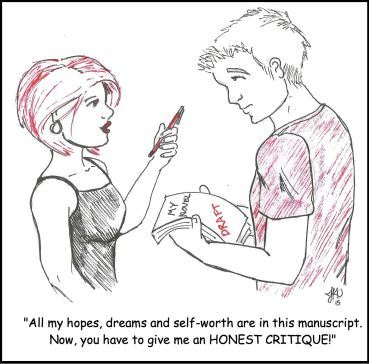J.K. Ullrich's Blog, page 31
May 29, 2015
Calling all book reviewers!
I’m excited to join the bibliophile community on GoodReads! (It’s a big step in overcoming my so-1990s phobia of social media and web forums.) To celebrate, I’m asking other GoodReads members, bloggers, and bookworms to review Blue Karma in exchange for a gift copy from me. No, it’s not a bribe: I want you to be honest in your review. If I wanted sycophantic praise, I’d flood Amazon with phony reviews attesting to my own brilliance. I want to know what readers really think of my book (but I certainly hope you enjoy it)!
So if you’d like to write a review, drop me a line at jkullrich (at) gmail (dot com) with a link to your site/profile and a few sentences about why your followers might be interested in my story. Maybe I’ll send a copy your way!

May 27, 2015
“Blue Karma” now available on Amazon Kindle!
It’s finally here! I’ve released my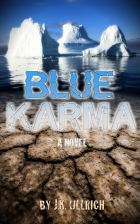 debut novel, Blue Karma, for Amazon Kindle. Those of you who’ve followed my blog know I worked on the project for over a year, so reaching this point is tremendously gratifying for me. I keep searching the title in Amazon and staring at the entry because I still can’t believe I published a book. Seeing my name and face on an author page is surreal!
debut novel, Blue Karma, for Amazon Kindle. Those of you who’ve followed my blog know I worked on the project for over a year, so reaching this point is tremendously gratifying for me. I keep searching the title in Amazon and staring at the entry because I still can’t believe I published a book. Seeing my name and face on an author page is surreal!
Proud as I am of this accomplishment, I don’t see it as the end of a journey, but rather the beginning. A dozen more stories are queued up in my head, jostling for their chance at the page. I set myself the goal of publishing my first book before age 30 and I made it with 11 months to spare. That’s a lot of writing time…so let’s go for two! Yes, I know what I’m writing next and I’ve already begun research. Teasers coming soon!
Meanwhile, check out Blue Karma and let me know what you think. I hope many of you will read and enjoy the story. If you do, please consider reviewing it on Amazon or Goodreads, recommending it to a friend, or giving it a shout-out through your social media. Happy readers are the best advertising for an indie author. More importantly, hearing your feedback will further my growth as a writer. Don’t let my English degree fool you–I have no pretensions of writing the “great American novel”. I aspire to write books that give people entertainment, enjoyment, and something to think about. Here’s hoping Blue Karma offers all of that to you!

May 22, 2015
Countdown to Publication
While most of the country is kicking off summer with beach trips and barbecues, I will spend Memorial Day weekend learning how to format for Amazon Kindle.
That’s right! Blue Karma is finished! Revisions took longer than I expected—I ended up completely rewriting the final third of the book—but it was worth it. I’ve made it the best story it can be. Time to push this fledgling out of the nest and see if it flies. Expect a jubilant post in the next few days, announcing the availability of my debut novel.
I also anticipate a return to more consistent blogging. My apologies for the radio silence of late; I’ve thrown all my energy into finishing Blue Karma. Some upcoming posts I’ve planned discuss the challenges of writing climate fiction and adventures in ebook formatting (.epub and .mobi and .html, oh my). But for the moment, it’s back to the manuscript. I can’t wait to share my story with you!

April 9, 2015
Redeeming Littlefoot: New Fossil Analysis Makes the Case for Brontosaurus
In what may be the next best thing to Pluto’s reinstatement as a planet, new fossil analysis suggests that Brontosaurus — the iconic dinosaur discounted as an erroneous duplicate name for its monophyletic buddy, Apatosaurus — is indeed a unique species. Take that, condescending museum docents who corrected me when I was seven years old!
The research initially sought clarify the relationships among the diplodocids, a family of gigantic long-necked sauropods. Scientists discovered enough differences between Apatosaurus and Brontosaurus to argue that they are seperate species. While most of the traits are anatomical subtleties, the main visual feature distinguishing Brontosaurus is its thinner neck.
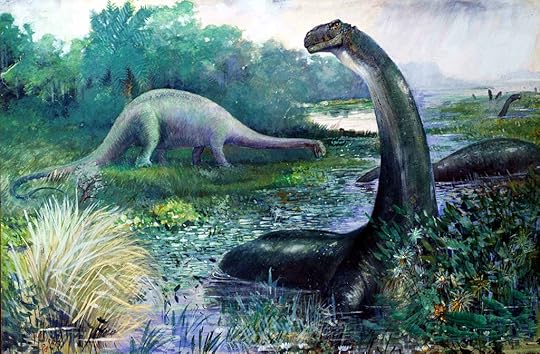
Welcome back, “thunder lizard”! In the primordial swamp of our hearts, you never left.
Paleontologist and “Bone Wars” rival Othniel Charles Marsh named both creatures in the 1870s, but in 1903 another paleontologist assessed that Marsh’s two specimens were in fact the same species. in keeping with the rules of taxonomic nomenclature, the scientific community kept the earlier name Apatosaurus. The change didn’t catch on with the public until the 1970s, by which time the name and image of Brontosaurus were firmly ingrained in the popular imagination.
Nothing is official yet: more conclusive research is needed before museums need to begin reprinting exhibit signs. But for those of us who spend childhood obsessed with dinosaurs, conducting sandbox “excavations” and watching The Land Before Time until the VHS tape wore out, the possible return of Brontosaurus feels like vindication. Science usually has the uncomfortable duty of disillusionment, challenging our comfortable facts and cherished mysteries. This new study is a refreshing reminder of science’s power to re-examine its own conclusions and, occasionally, redeem a slighted discovery. I will be rooting for the resurrection of Brontosaurus (both in name and in flesh; arguably, the best way to resolve the species debate is to create some live sauropods and compare)!
Read more about the study at Scientific American and Smithsonian Magazine, and compare them to a dissenting opinion in Time.

April 3, 2015
Love and Editing
My Laddie and I have reached a new level in our relationship. More stressful than moving in together, more intimate than making love…I let him start reading the draft of Blue Karma.
Inherent perfectionism has always made me a bit self-conscious about my fiction. I’m nauseated to think of anyone reading my work before I’m satisfied (so basically never, which makes becoming a published author rather problematic). But after a year immersed in the draft, I’m saturated. I need an external mind to evaluate the story, someone who is not only sufficiently well-read in the genre to give insightful criticism, but whom I trust to do so with pitiless candor.
Having my significant other read the draft is a uniquely terrifying experience. It’s more than just a window into the twisted landscapes of my imagination. It’s a judgment on my ability as a writer. Yes, dear, this is what I was doing on all those long weekends I spent hunched over a laptop instead of hanging out with you. This is why our shared desk is elbow-deep in cryptic sticky notes. Here is the product of the authorial ambitions I’ve raved about since the day we met: the determination of whether I’m a promising storyteller or just a lunatic with a good vocabulary.
To his credit, my Laddie undertook the task with alacrity. (“It’s like a treasure hunt,” he proclaimed, highlighting the tenth typo in chapter one—ouch). He’s proved himself a thoughtful and meticulous editor, both for technical errors and matters of storycraft. Add “editor-in-chief” to his list of relationship qualifications, along with running buddy, sous chef, fashion consultant, physical therapist, band roadie, and space heater. I’ve given him about half the manuscript so far, and he says he’s enjoyed it. That’s a relief, but he’s also shown me a lot of plot holes that need patches (if your relationship can survive constructive criticism of your novel, it can survive anything.)
Feedback revealed that Blue Karma is not telling the story I intended. It starts off all right, then veers into uncharted territory. When I expressed this concern to my Laddie, he said something that ignited fireworks in my head: “just because it’s not the story you planned doesn’t mean it’s not a good story.” So I won’t delete the entire thing and start over. Instead, I consolidated some of the chapters and began rewriting the last hundred pages to pull the plot back on track. Daunting amount of work? Yes. A delay to publication? Definitely. But that’s what revision is about.
Thank you, love, for helping me realize this project and the dream it represents. With your help, this book will make us both proud (and maybe earn enough in royalties to buy a bigger desk)!

March 16, 2015
Intergalactic March Madness
In honor of the Hubble Telescope’s upcoming anniversary, participate in Hubble Mania 2015, a tournament challenge featuring some of the telescope’s most famous photographs. Fill out a bracket, vote for your favorite images, and get ready for some (literally) stellar match-ups!
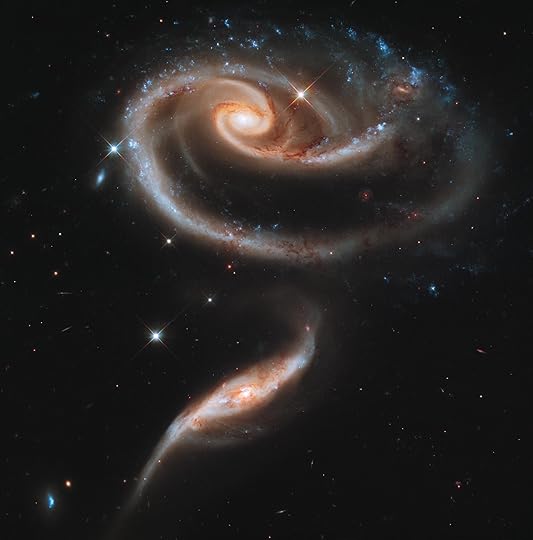
This iconic photo of galaxies interacting is one of my bracket picks!

March 15, 2015
“Soggy” Solar Systems: The ocean on Jupiter’s moon
Just weeks shy of its 25th birthday, the Hubble Telescope introduced us to yet another marvel in our solar system: a saltwater ocean beneath the icy surface of Jupiter’s largest moon, Ganymede. The discovery raises the possibility that Ganymede, or other bodies like it, could be habitable for humans.
Unlike a lot of moons, Ganymede has its own magnetic field, which interacts with space particles to create an ultraviolet glow around the moon’s poles. It also mingles with the magnetic field of neighboring Jupiter; resulting auroral shifts reveal clues about the planets’ internal composition. Hubble’s observations of this phenomenon indicated the presence of large amounts of salt water beneath Ganymede’s 95-mile thick crust. (View a great diagram here.)
Scientists estimate the ocean is 60 miles deep—ten times the depth of Earth’s oceans—and could hold more water than all Earth oceans combined. “The solar system is now looking like a pretty soggy place,” Jim Green, NASA’s director of planetary science, commented in a news conference. With watery worlds in our own solar system, who knows how many others lie beyond?

Ganymede peeks out from behind Jupiter
If you’re familiar with the premise of my upcoming novel Blue Karma , you’ve probably guessed my obsession with water. The thought of entire oceans on other planets enthralls me. Earthling biology assumes that water is a necessary factor for life (at least if we define life as carbon-based organisms like ourselves). Consider the bewildering array of plants and creatures that call our planet’s oceans home. Now multiply by ten. What might be swimming in the oceans of Ganymede?
The other consideration is habitability. Sure, Ganymede has oceans, and even a thin oxygen atmosphere, but its daytime surface temperatures range from -113C (-171F) to -183C (-297F). Not exactly prime real estate, climactically speaking. What about using the water to supply an orbiting space station? Or mining the water to supplement Earth (or heck, a colony on Mars)? Given our species’ dependence on H20, it’s fortunate that we live in a “soggy” solar system!
Read more about Ganymede’s oceans at NASA, Scientific American, and the BBC.

March 8, 2015
They Went Boldly: Farewell to Pioneers of Science and Science Fiction
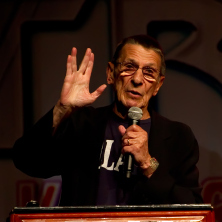
Leonard Nimoy in 2011
Science fiction fans around the world mourned the February 27 passing of Leonard Nimoy, who made Star Trek‘s Mr. Spock a cultural icon. Nimoy played Spock on television from 1965-1969 and in eight films, earning three Emmy nominations for his portrayal of the starship Enterprise’s science officer. Spock’s struggle to reconcile his hybrid heritage—Vulcan logic and homo sapien emotions—allowed fans to plumb their own humanity. Nimoy suffered similar struggles, attempting to define his artistry in various media while permanently linked to Spock’s popularity. Ultimately Nimoy embraced the character and, when he made his final voyage at the age of 83, he’d left an indelible mark in the annals of popular science fiction.
I don’t consider myself a Trekkie, but I grew up watching Star Trek: The Next Generation (take-out and Trek, dubbed “Chinese/Picard night”, was a family treat). In college I took a class entitled “Philosophy and Star Trek”. The professor, clad in a red captain’s uniform, introduced us to fundamentals of philosophy and theoretical physics with Trek episodes to illustrate each concept. I discovered that Spock and company’s greatest explorations were not of the cosmos, but of the mind and spirit. Trek used its fantastical premise as a stage for deeply human themes. This is, I believe, the core principle of all good science fiction.

Dr. Eugenie Clark
On February 25, two days before Nimoy’s death, the earth-bound science community also lost an influential figure: ichthyologist Eugenie Clark. In the 1940’s and 50’s, when academic communities were often unfriendly to women, Clark swam with sharks. Her groundbreaking workhelped dispel fearful misconceptions about these “monsters” and earned her the nickname “Shark Lady”. She also pioneered SCUBA as a tool of marine science. In 1955, she founded the Mote Marine Laboratory in Florida, and contributed to champion research and education for the rest of her life. She stated that “those of us who love the sea wish everyone would be aware of the need to protect the sea”.
As a kid, I found a biography on Clark at the local library and read it so many times, I still remember specific illustrations and anecdotes. Clark rivaled any fictional heroine I’d encountered: smart and fearless, opening new worlds through her adventures. Her story fueled my lifelong interest in marine biology and environmental conservation. More importantly, in a world of princesses and pop stars, Clark provided me a real-life role model of girls breaking barriers and pursuing science.
Saying goodbye to these two remarkable people in the same week was a blow. But both left enduring legacies that will influence generations of science and science fiction to come.

February 22, 2015
Recent Reads: Neverwhere
I was fully prepared to like Neil Gaiman. His 2013 lecture to the Reading Agency inspired a kindred affection in me, with a perspective that warmly recaptures my own experience with reading. And what sci-fi geek didn’t smile to see him introduce Ursula LeGuin before her own excellent speech at the National Book Awards in November? But it wasn’t until a few weeks ago—when my dad lent me a paperback copy of Neverwhere he’d scored from the library sale table for fifty cents and said “this is a cute story, I think you’d like it”–that I finally read Mr. Gaiman’s fiction. And he proved to be just as imaginative and charming as I’d expected.
Neverwhere, a picaresque urban fantasy romp, introduces us to a very ordinary young Scotsman named Richard Mayhew. When he helps a mysterious girl he finds injured on the sidewalk, he falls out of contemporary London and into London Below, a parallel underground world where all the city’s centuries seem to converge in one eclectic pastiche. Magic and history collide at every turn: earls hold court in subway cars; vagrants speak the language of rats; beautiful vampiric creatures evoke Victorian streetwalkers. Richard’s new friend Door possesses a magical gift for opening things; she’s also on the run from supernatural assassins who killed her family. With support from a diverse company of characters, the pair embarks on a quest to uncover Door’s family secrets and return Richard to his own world.
Although it never achieves great character development or plot complexity, Neverwhere functions well as a modern fairytale. It echoes Alice in Wonderland and The Wizard of Oz in its own unique landscape. Gaiman’s writing style, like his protagonist, is affable and unpretentious. He plays with reality like a glassblower working molten glass, twisting it into bright parody of itself. This aspect transforms the simple, archetype-driven story an immersive experience. Its color and liveliness also make for good winter reading, so if you’re weary of cold drab nights, take a cue from book’s Black Friars and brew a “lovely cup of tea”, then enjoy a foray to London Below!

February 12, 2015
Ink-Stained Cassandras: when news steals your sci-fi
New climate analysis, published today in the inaugural issue of Science Advances, indicates the drying of the US will be much more extreme than expected, bringing the worst droughts in a millennium. And our current water strategies may not be sufficient to manage the change.
Severe drought a thousand years ago is probably what drove ancient Americans to abandon their pueblo cities, such as Mesa Verde. Models suggest future conditions will be even worse, thanks to a combination of decreased rainfall and greater soil evaporation from heightened temperatures. The Southwest and Great Plains are already dealing with serious droughts, affecting not just water availability but food and energy production. If we don’t address these issues proactively, researchers say, it will be even harder to mitigate the impact.

Red, yellow, and orange = bad
There’s nothing like internationally reported scientific findings to advertise your novel. Just kidding! But seriously, reading these articles was like reviewing my early notes for Blue Karma. The droughts, the subsequent food shortages, the failure of existing legislation to cope with demand…all of these aspects appear in the story. Only this isn’t an imagined environmental dystopia: it’s our planet.
Science fiction writers—at least those who deal in near-future exploration, like I do—are always working against the clock. You’ve got to race your own idea to the headlines, publishing your prophecy before it comes true like an ink-stained Cassandra. When the story seeds of Blue Karma first took root in my brain almost a decade ago, the only thing I remember reading about severe droughts was a National Geographic feature on water-strapped farms in Australia’s outback. Now des looms in my country, in my lifetime. Elements I dreamed up for my story are now borne out in statistical models by NASA scientists.
This is not to suggest that I’m some kind of science fiction visionary. Quite the opposite, in fact. If these possibilities are obvious to an imaginative, well-intentioned hack like me, how is it that so many people still remain stubbornly blind when the evidence comes out? How can our leaders be so slow to address problems, even with plenty of warning? Is science fiction just self-absolution, allowing me to shake my head and say “I told you so” as the earth literally crumbles around me?
Cheerful stuff, isn’t it? At any rate, I hope this new study will motivate me to overcome my own editorial “drought” and get Blue Karma finished while it’s still fiction.
Read the full study from Science Advances or a good summary from Scientific American.


